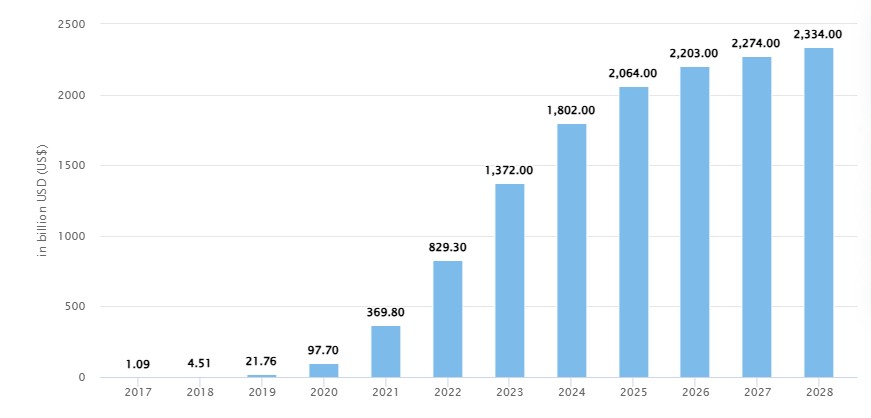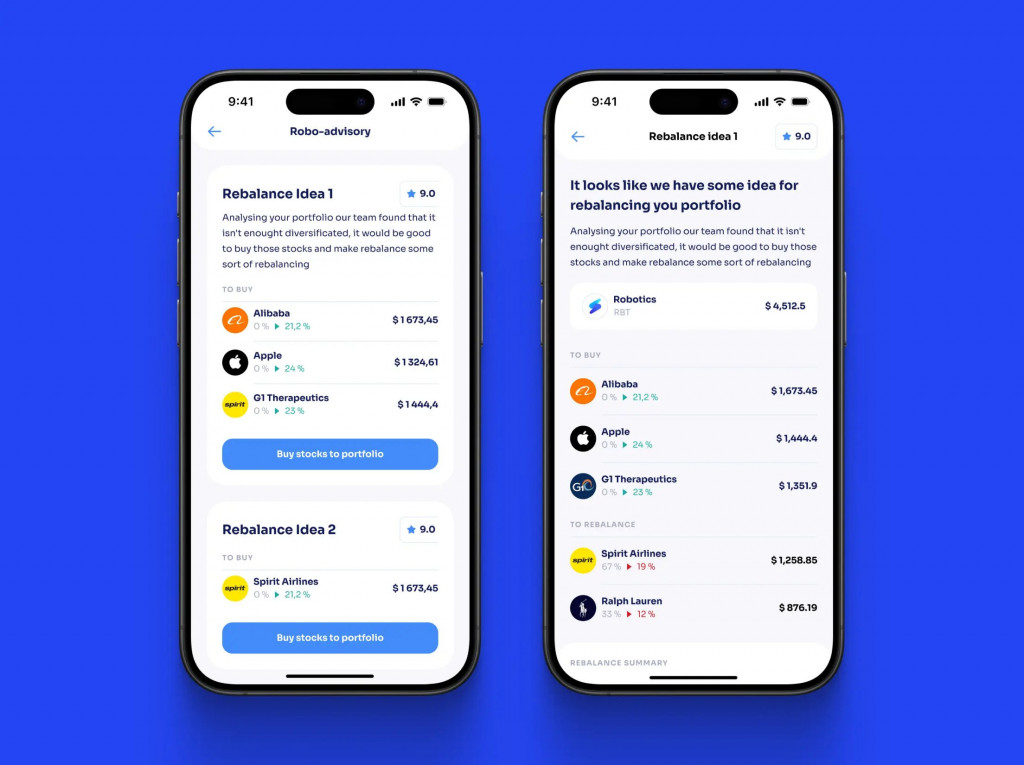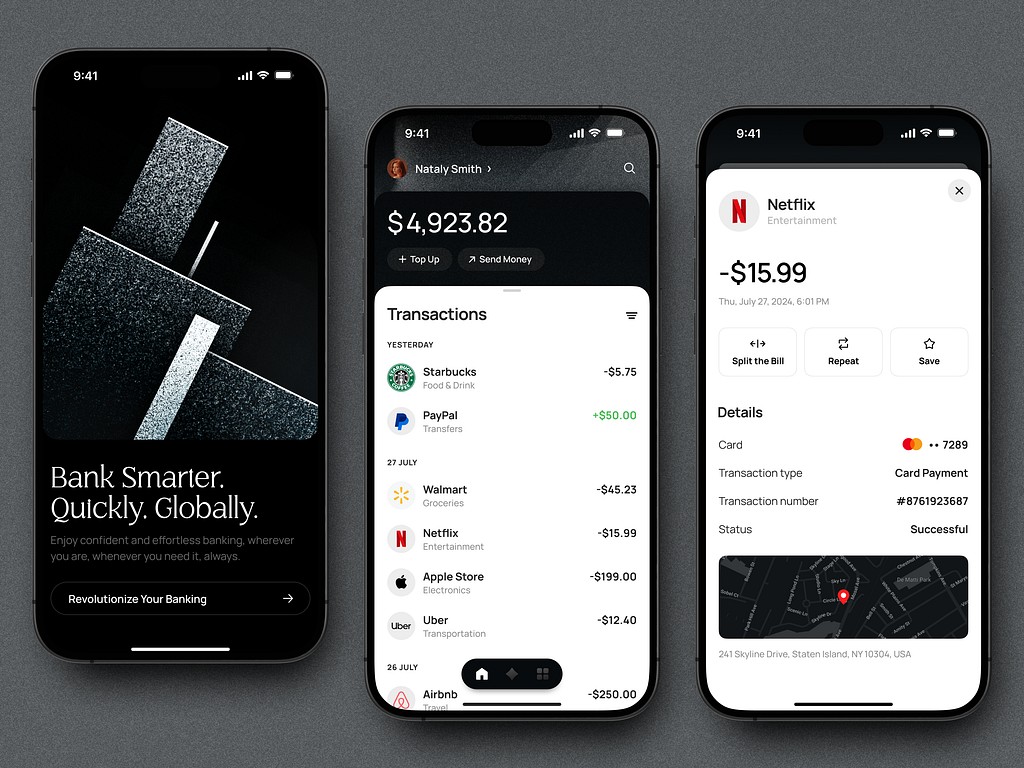Traditional wealth management feels archaic in an age where convenience, personalization, and accessibility reign supreme. In the neverending race, you can easily fall behind your competitors: professionals demand advanced features to make precise decisions, while beginners need help with unfamiliar options.
Contents:
The answer to this problem is automation with a robo advisor. AI can streamline processes for pro traders and support users with little experience. Still, it raises a few questions. How do you ensure your app is user-friendly while maintaining the sophistication necessary for effective investment strategies? How can you build trust with users wary of automated systems managing their finances?
We will dive deep into the essentials of robo advisor app development, addressing the pain points you encounter and offering actionable insights to propel your project forward. Whether starting from scratch or looking to enhance an existing fintech platform, you’ll discover strategies for overcoming obstacles and designing a compelling user experience.
What is a robo advisor?
It is a tool that helps you manage your investments automatically. Instead of speaking with a human financial advisor, you provide the instrument with information about your financial goals, risk tolerance, and investment preferences. The app then uses smart algorithms to create and manage your investment portfolio, deciding where to invest your money.
It’s a convenient and usually lower-cost way to get investment advice and management. By 2028, around 34 million people will leverage this option. An annual growth rate of assets under management will be approximately 6.68%. These numbers show that traders are interested in robo investing apps.

Benefits of a robo advisor
This is a great option for people seeking a simple and efficient way to invest their money.
- Cost-effective: They typically have lower fees than traditional financial advisors, making investment management more affordable.
- Accessibility: You can use them anytime and anywhere, often through a user-friendly app or website.
- Automation: Robo-advisors automatically manage your investments, including rebalancing your portfolio and reinvesting dividends, saving you time and effort.
- Personalization: They tailor investment strategies to your financial goals and risk tolerance based on the information you provide.
- Diversification: Most robo-advisors invest in a wide range of assets, helping to spread risk across different investments.
- Transparency: They often provide clear information about fees, investments, and performance, making it easier to understand where your money is going.
- Tax optimization: Many robo-advisors offer tax-loss harvesting, which can help minimize your tax bill by offsetting gains with losses.
- No minimum investment: Some platforms have low or no minimum investment requirements, making them accessible for beginners.
Essential components of a robo advisor app
You should include several fundamental components in the application to make the feature work flawlessly.
A user-friendly interface based on a robust frontend is a must. It is the face of your app, the first thing your users see. Even beginners should be able to easily manage their accounts, view performance, and access investment options. If users are confused, they will give up the product. To avoid that, opt for a minimalistic style, add extensive onboarding, and integrate glanceable dashboards.
Build a backend system with strict security options to support the frontend. This includes databases (e.g., SQL, NoSQL) to store user info, transaction history, portfolio information, and market data. Apart from server infrastructure, you also need systems for processing large volumes of financial data, performing analytics, and generating insights for users (e.g., using big data technologies).
Automated rebalancing, portfolio management, and other smart algorithms to help people deal with their finances efficiently.
In robo investment, the smart algorithms are based on machine learning models that enhance investment strategies or improve risk assessments through predictive analytics and data-driven decision-making.
Use APIs to access market data, execute trades, and integrate with third-party financial institutions (investment platforms, banks, etc). With programming interfaces, you also integrate secure methods for verifying user identities and managing user sessions (e.g., OAuth, JWT). You can add endpoints for managing portfolios, enabling automated rebalancing and adjustments based on investment strategies.
If you plan on scaling in the future, you need a cloud infrastructure. Leverage cloud services (like AWS, Azure, or Google Cloud) for scalable hosting, storage, and processing capabilities to handle fluctuations in user volume and data demands.
For integration with financial custodians, consider adding special systems for account management, asset custody, and transaction settlement, ensuring safe and compliant handling of investments.
When working on Solio, we’ve designed a user-friendly robo advisor aimed at young people with little experience in finance management. It is aimed to give them a firm footing until they learn to make informed decisions.

Solio app by Shakuro
How to build a robo advisor app?
It is a complex process that requires careful planning, execution, and ongoing management. Make sure to involve financial experts and legal advisors throughout the development process to ensure a successful and compliant product.
Here’s a step-by-step guide to creating an automated investing platform:
Step 1: Research and planning
When going on a journey, you need to know your surroundings. This approach also works in app development. First, analyze existing robo-advisors to identify unique features and competitive advantages. Determine what your target audience will be–demographics, investment needs, pain points, etc.
Based on the market, understand and comply with relevant financial regulations (e.g., SEC, FINRA, GDPR). If you face any difficulties, you can consult legal advisors to save time and effort.
Step 2: Concept development
With research at hand, pick the business model (e.g., percentage of assets under management, subscription fees, etc.). Then outline the core features, such as user onboarding, risk assessment questionnaires, portfolio management, performance tracking, and reporting. Define the algorithms and asset classes that the robo investing app will focus on (e.g., ETFs, stocks, bonds).
Step 3: Exploring design
Map out how users will navigate the app with user flow diagrams. Develop wireframes and prototypes leveraging these diagrams. At the same time, think about the visual identity, including logo, colors, and typography. It is a comprehensive approach that allows you to focus on simplicity and usability.
Step 4: Technical architecture
Choose the tech stack together with your development team. For example:
- Backend: Select frameworks (e.g., Django, Flask, Spring) and programming languages (e.g., Python, Java).
- Frontend: Choose frameworks (e.g., React, Angular, Vue.js) for building a responsive UI.
- Database: Decide on relational (e.g., PostgreSQL, MySQL) or NoSQL (e.g., MongoDB) databases for data storage.
- Design RESTful APIs for communication between the front-end and back-end services.
Step 5: Development
Create the interface based on the designs, implement investment algorithms and business logic, and add integrations with financial data providers and custodians. Use back-end APIs for data retrieval and user interactions.
Make sure your app has a sufficient protection level. Implement encryption (SSL/TLS), secure data storage, and user data protection. Conduct a compliance audit to ensure that the robo advisor app meets all regulations.
When a prototype is ready, perform unit testing, integration testing, and user acceptance testing (UAT). This way, you prevent most of the issues from happening in the future.
Step 6: Deployment
Once tests are over and the product meets your expectations, select a cloud provider (e.g., AWS, Azure, Google Cloud) for hosting the application. Then set up CI/CD pipelines for automated testing and deployment. Finally, deploy the automated investing platform to production.
Step 7: Maintenance and Scaling
After release, monitor performance with analytics tools, tracking user behavior and app performance. Based on the insights, regularly update features, fix bugs, and improve algorithms. Also, stay tuned for any regulatory changes and adjust the app accordingly.
For scaling your business further, consider adding new features such as tax-loss harvesting, financial planning tools, or advanced analytics based on user needs. Evaluate opportunities to enter new markets and adjust offerings based on local regulations.
Robo advisor app development costs
The expenses depend significantly on several factors, including team, location, complexity, etc. Let’s dwell on each factor so you can produce your budget properly.
- Complexity of features: The more complex and advanced the features (such as AI-driven investment strategies, detailed financial analytics, etc.), the higher the development cost.
- Design requirements: Custom UI/UX designs increase costs, especially if you aim to create a highly intuitive and engaging experience.
- Development team location: Hiring developers in different regions can greatly affect costs. For instance, development costs in North America and Western Europe tend to be higher than in Eastern Europe or Asia.
- Technology stack: The choice of front-end and back-end technologies impacts costs. Some frameworks and tools may have licensing fees associated with them.
- Regulatory compliance: Incorporating features for compliance with financial regulations adds to development costs, as it might require legal consultation and additional development.
In general, a simple robo-advisor app with minimal features will cost around $50,000 and $100,000. If you need a more sophisticated app with a custom design, the budget might reach approximately $100,000 to $250,000. A fully-featured, highly customized robo-advisor app with advanced algorithms, AI, and strong security features could easily exceed $250,000 and go up to $500,000 or more.
Also, keep in mind that you will have ongoing costs for the maintenance, updates, marketing, and user acquisition. If you have a tight budget, consider starting with an MVP (Minimum Viable Product) to test the market, which can help minimize initial costs while allowing you to gather user feedback.

Fintech Mobile App UI Design by Shakuro
Is robo advisor worth it?
Judging from our experience, it is a worthwhile venture for several reasons. There is a growing interest in personal finance and investment management among younger demographics, particularly millennials and Gen Z. Around 45% of people in these groups are concerned about their finances. They are increasingly looking for accessible and affordable investment options. What’s more, robo-advisors typically have lower fees compared to traditional financial advisors, making them more attractive to cost-conscious consumers.
Personalization has been an ongoing trend for years. So personalized investment strategies based on individual goals, risk tolerance, and financial situations enhance user engagement and satisfaction.
Finally, there are opportunities for partnerships with banks, investment firms, and other fintech companies to enhance the app’s functionality and reach a wider audience.
While competition in the industry may be intense, the potential for innovation, personalized services, and meeting the needs of an evolving market makes this type of app development an appealing business opportunity.
The journey of creating an automated investing platform requires careful consideration of features, user experience, regulatory compliance, and cost management. With a strategic approach, involving skilled professionals, and adapting to industry trends, you can build a robust app that resonates with users and stands out in a competitive market.
Need a development team to build a robo investing app? Contact us and let’s create a robust platform that caters to both professionals and beginners.

